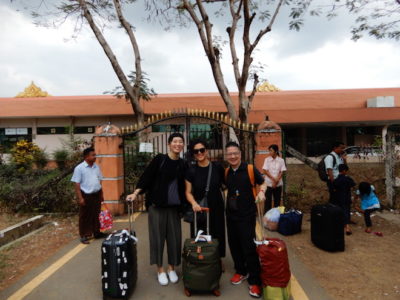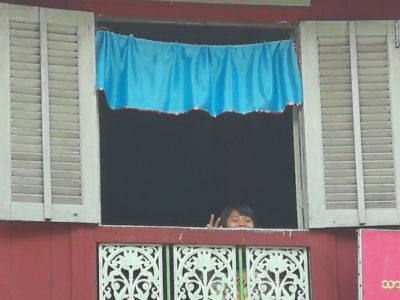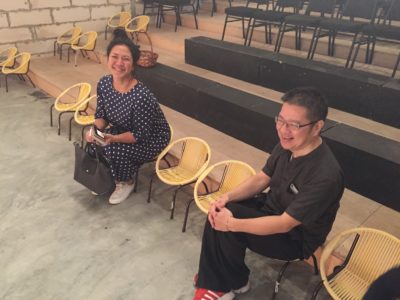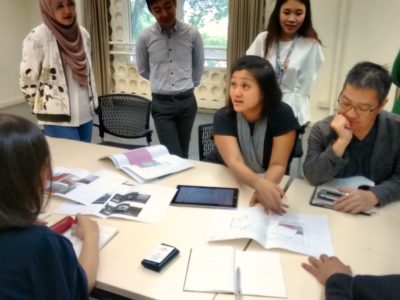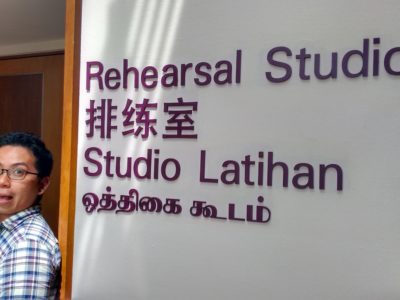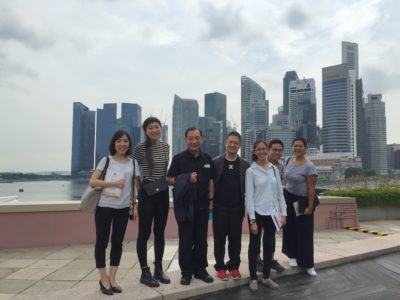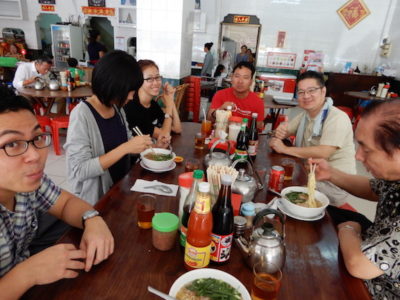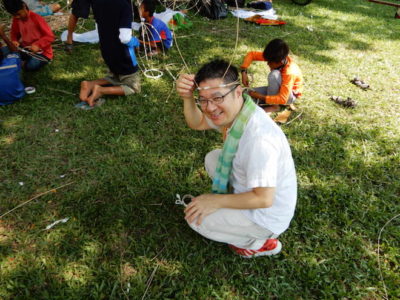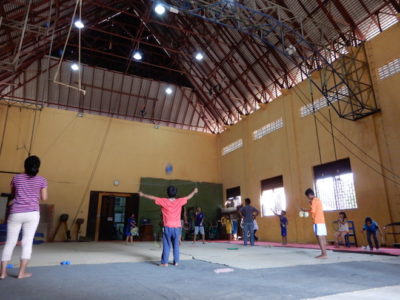Home » Research Visit Reports » Nao Miyauchi
As part of Asian TYA Network Programme, we visited Myanmar in Dawei and Yangon for the third research trip from the 6th to 11th of January 2018. For the last two trips, we basically visited arts organisations, theatres, and relevant organisations based in the area we visited and heard about their activities. For this trip in Myanmar, however, we were lucky to be able to join New Yangon Theatre Institute (NYTI)’s research trip for their project they are planning. The trip became a very interesting one as we could learn about the situation of artistic activities in Myanmar while observing the NYTI’s approach to plan and start a project. I would like to express our hearty thanks to NYTI for letting us join their trip and for their support.
NTYI is a Yangon-based ‘social action theatre’ organisation which was established in 2012. They employ applied theatre and contemporary theatre techniques to explore, analyse, face and hopefully solve the social issues of the community they are working with. They always work closely with local organisations (often CSOs -civil society organisation-) and intend to work in a long term, based on the trust relationship with the community. We met one of the members Ms May Thet Zaw at ricca ricca*festa 2017 when she took part in another programme. When we approached her again for this trip, she kindly suggested to accompany their own research trip. Therefore we spent most of our time in Myanmar in a small Southern town called Dawei, which is about 1 hour flight distance from Yangon and located near the border with Thailand, which made our trip even more interesting.
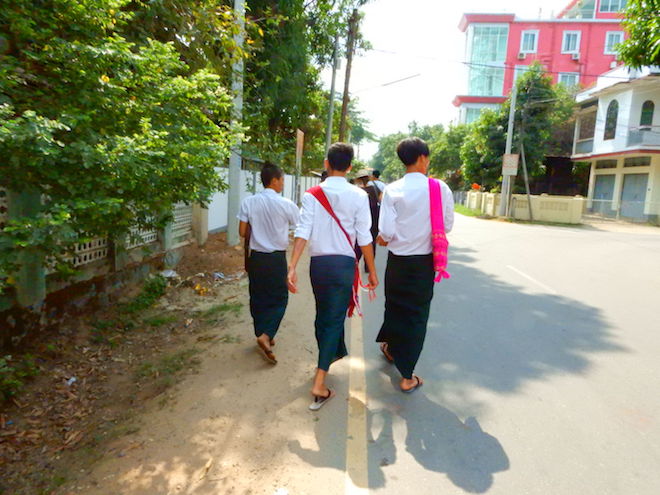
Asian TYA Network Programme started in 2016 in partnership with the Japan Foundation Asia Center with the aim to be connected with the TYA practitioners in South East Asia and to explore the possibilities of collaborations by understanding the current situation of TYA in those regions. The research trip is part of this programme and we visited Singapore and Kuala Lumpur in November 2016 and Cambodia in February 2018. It has been extremely useful to understand the situation of TYA in the area with the local contexts. Arts and culture never stand alone, but tightly linked with the history, tradition, social structure, government policies and many other factors in the country. Through the meeting with local arts organisations and practitioners, and also by having conversations with local people at a restaurant and in a taxi, we can really learn about this.
This is especially relevant in the countries where the system as the country drastically changed recently, such as Myanmar and Cambodia. The social and political changes have direct influence on how arts and culture exist. If we want to explore the collaboration possibilities with the artists in the country, or to organise a project in the country, it is absolutely essential to understand what kind of environment the artists are living in. This series of research trips really taught us about this as a real experience and opened our eyes. For example, one may understand about Myanmar, based on history classes and international news that ‘Myanmar suffered for a long time under the military government until the country was opened in 2011. 7 years have passed and the exchange with foreign countries is getting more and more active’. But if you really try to understand harder, you may say ‘For more than 60 years Myanmar was a place where people could not gather with more than 5 people in a public place, otherwise you get arrested, were only allowed to live in the address you are registered and were always watched by your neighbours. All of the sudden the country was opened and foreign people and resources flooded in. Even after 7 years, people are still unsure if they can actually act freely. So many NGOs come to help us but they would go back immediately after the project is over so it is hard to trust them’. Based on your understanding of the country, the way you plan and execute the project and how you spend time would be totally different. Such selfish mistakes can be easily made especially when you are the one who have budget. As an organisation which is based in a big city Yangon, it is NYTI’s motto to understand the environment people are living in, listen to the real voices of people and sincerely analyse what the necessities are when they work in small towns such as Dawei and that was why they organise research trips like this time. This is absolutely applicable when we try to work with artists from countries and regions where we have never or hardly interacted with before.
It is fair enough that theatre-going culture does not get familiar in a country where you were now allowed to gather with people in public spaces. It will take a long time to gain trust to the artists from the people who have not had opportunities to experience any sorts of contemporary arts. It feels like a quite wise choice that many theatre artists go into the communities not as an artist but as a ‘social worker’ and work to support and improve people’s living, using theatrical approach as a tool. Of course there is a situation that people have much more important issues and problems to face in their daily live before even considering about going to see a quality art, but I believe it is a very effective starting point to make people aware of the arts and make them feel familiar with the arts. Those children who took part in such activities by organisations like NYTI may become interested in performing arts and develop the desire that they want to learn the skills to work as an artist, or to see more variety of performances. It is not a difficult future to imagine.
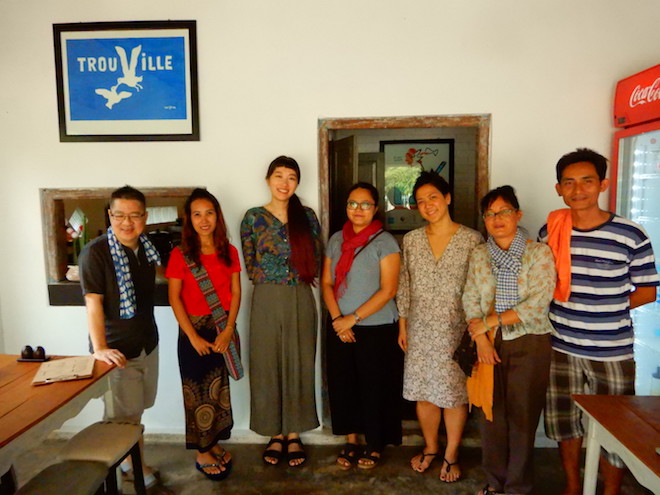
The environment for artists in Myanmar is not the most ideal one. Even a big city like Yangon does not have a contemporary theatre space, there is no training available for artists to develop their skills, there is no guarantee for stable activities… However, when you see those artists who dedicate themselves to step deeply into the community and get involved in the communities in order to solve problems with children and make a better society, it makes me feel that there are so much Japanese TYA artists should learn from them. You tend to see beautiful words such as ‘creativity’, ‘sensitivity’ and ‘capacity for imagination’ in Japanese TYA and the performances are often very ‘safe’ for any children. But how many artists in Japan actually face every single child with the eyes as strong and honest as NYTI members do?
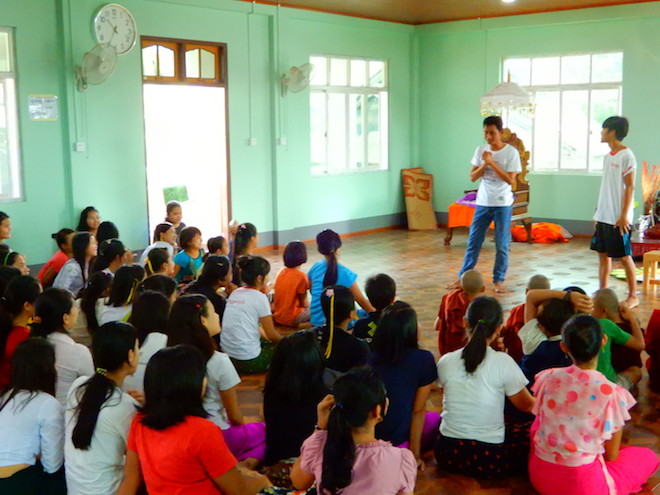
As the organiser of Asian TYA Network Programme, we have been questioning ourselves, ‘What is the best direction for this project?’ Cooperation with South East Asian practitioners has been our mission from the beginning as an international TYA festival based in Okinawa, the gateway to connect Japan and South East Asia. We strongly believe this programme is also extremely important for the children in Japan who now live in an international society than ever especially with people from South East Asian origin. International exchange does not just happen between countries anymore, but also in a classroom and local community, often forcibly but absolutely naturally. In order for children in Japan (regardless of nationality) to accept and respect each other, and to live together, TYA in Japan must change and adapt with wider perspectives by learning new approaches.
As much as, if not more, this programme is beneficial to Japanese TYA and society, we must make sure it is also a meaningful one for the TYA professionals in South East Asian regions (and in the future for their society as well). In order to make it possible, we must clearly understand the current situation in South East Asia. This is the basic approach of what we have been doing for the last 2 years with the Asian TYA Network Programme. We cannot thank the Japan Foundation Asia Center enough for trusting our idea and providing their time and resources for this slow, long-term process. What we have learnt through the activities so far is 1) the situation around the arts is very different in each country and region, 2) in many places the network of artists and arts organisation is not established due to geographical or language reasons which makes it difficult to share information and cooperate, and 3) the expectation for TYA (or any equivalent activities which are not called TYA) and its role to play can be diverse depending on the country. When we discussed about the future of this programme with the research members during this trip, we found out it is a surprise even for members in South East Asia that the situation is so different in each country and there was a comment that it seems too challenging at this point to gather people from those different countries to work together for one project or something.
When I recall the words from people who we met through this programme and had various discussions, it feels that the anticipation for this programme, and for us (ricca ricca*festa and the Japan Foundation Asia Center) is not a kind of project which you can easily see the end result such as co-production and project in certain country, which often leave rather little long-term achievement, but to become the connection point for South East Asian practitioners, to provide opportunities to meet and exchange with artists in Japan and other parts of the world making use of ricca ricca*festa, and moreover to really work in long-term planning in order to develop TYA in the regions. We should learn from NYTI’s approach to 1) analyse what is needed, 2) establish a trust with those who are involved, and 3) set up a safe space to work in. By going through such process with sincere attitude, we may establish the true meaning of this programme.
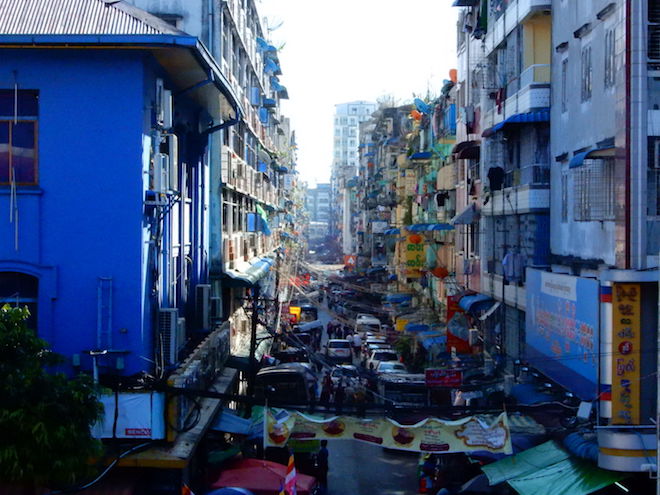
This programme is already starting to leave our hands. BICT Fest, organised by one of the programme participant, is planning the South East Asian TYA Meeting during their festival this May. Other members also meet in various places and the exchanges are done between them. These may not be a huge outcome but surely some extremely important and meaningful steps for the future of TYA in South East Asia. We also want to think about our next step with our colleagues in this programme so that the Asian TYA Network Programme will be a long-time place for meeting and dialogue for Asian TYA practitioners.




